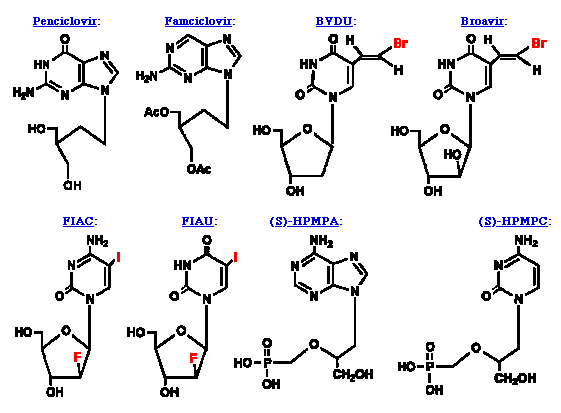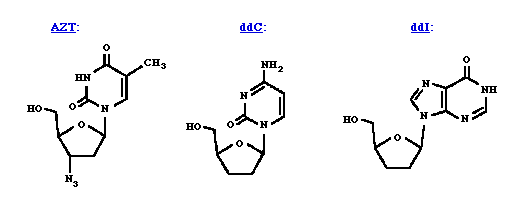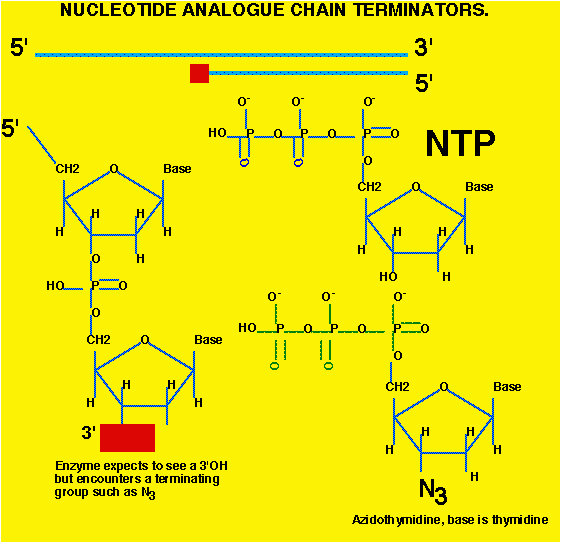Genome Replication
Many viruses have evolved their own specific enzymatic mechanisms to
preferentially replicate virus nucleic acids at the expense of cellular
molecules. There is often sufficient specificity in virus polymerases to provide
a target for a specific antiviral agent, and this method has produced the
majority of the specific antiviral drugs currently in use.
The majority of these drugs function as polymerase substrate (i.e.
nucleoside/nucleotide) analogues. The toxicity of these drugs varies
considerably from some which are well tolerated (e.g. acyclovir) to others which
are highly toxic (e.g. IdU/TFT/AZT). There is a serious problem with the
pharmacokinetics of these nucleoside analogues, e.g. typically short serum half
lives of 1-4h.
Nucleoside analogues are in fact pro-drugs, since they need
to be phosphorylated before becoming effective. This is the key to their
selectivity:
- Acyclovir is phosphorylated by HSV tk 200
times more efficiently than by cellular enzymes. The cell DNA polymerase is
less sensitive to it than the viral DNA polymerase.
- Gancyclovir is 10 times more effective against CMV than
acyclovir since it is specifically phosphorylated by a CMV-encoded kinase
encoded by gene UL97 :
More recently, a series of other nucleoside analogues derived
from these drugs and active against herpesviruses have been developed:

Nucleoside analogues active against HIV:


Gene Expression
Virus gene expression is less amenable to intervention than genome replication,
since viruses are much more dependent on the cellular machinery for
transcription, mRNA splicing, cytoplasmic export and translation than for
replication.
Assembly / Maturation / Release
As stated above, for the majority of viruses, these processes are poorly
understood. Two drugs with anti influenza activity are available,
Relenza taken as an aerosol and Tamiflu taken as a
pill. The latter is active against both A and B strains. Both function as
neuraminidase inhibitors and prevent the release of budded viruses from the
cell. Because they act late in the life cycle of the virus it is hoped that
problems with resistance emergence will be minimised. Tamiflu is reported to be
90% effective as a prophylactic agent.
|